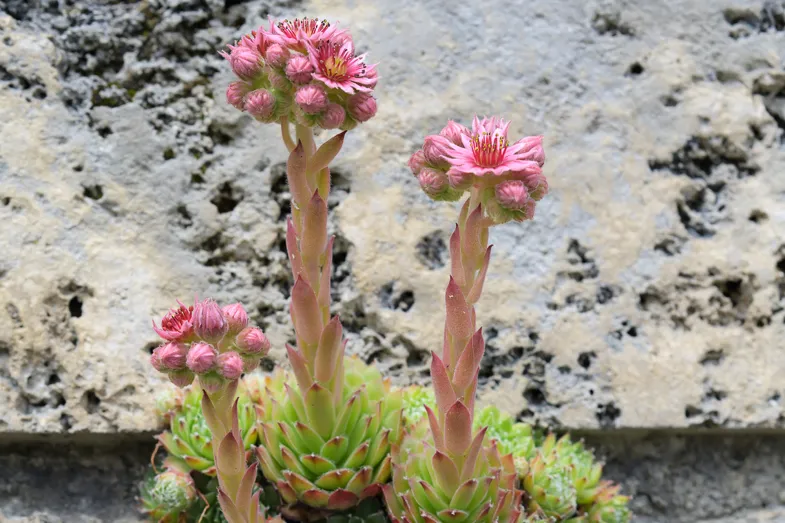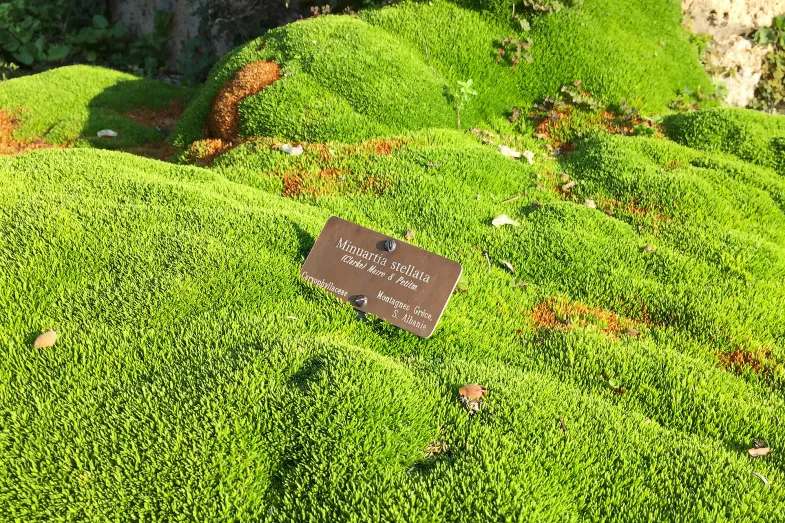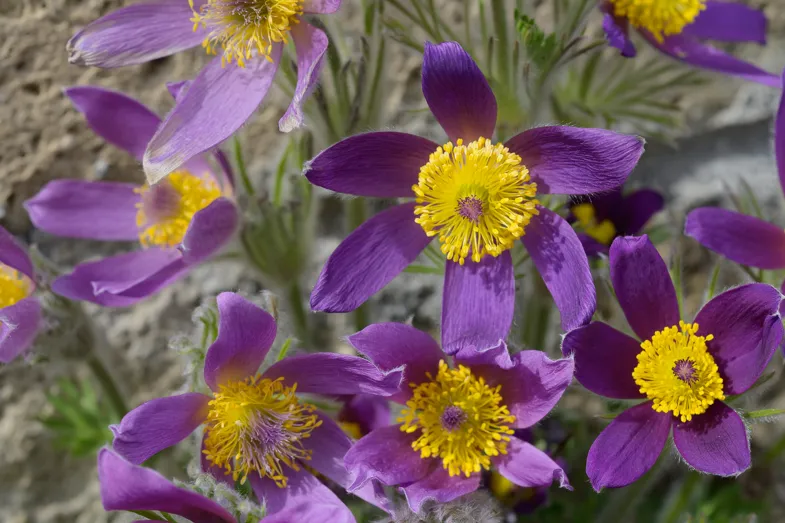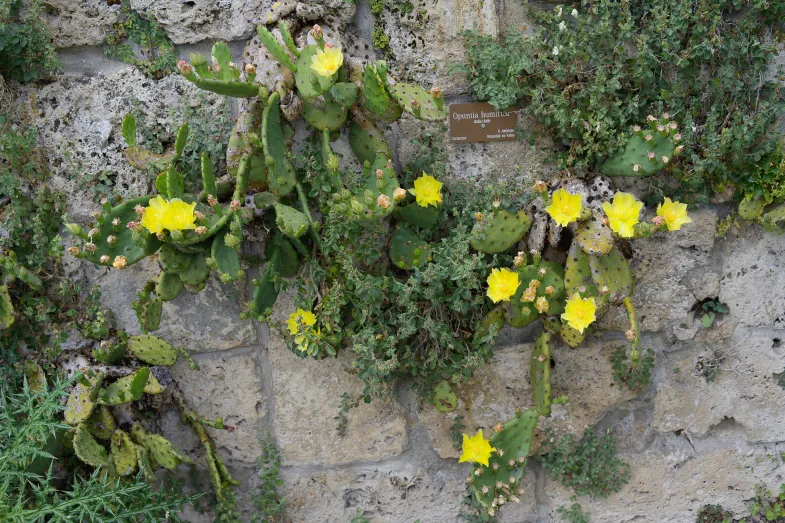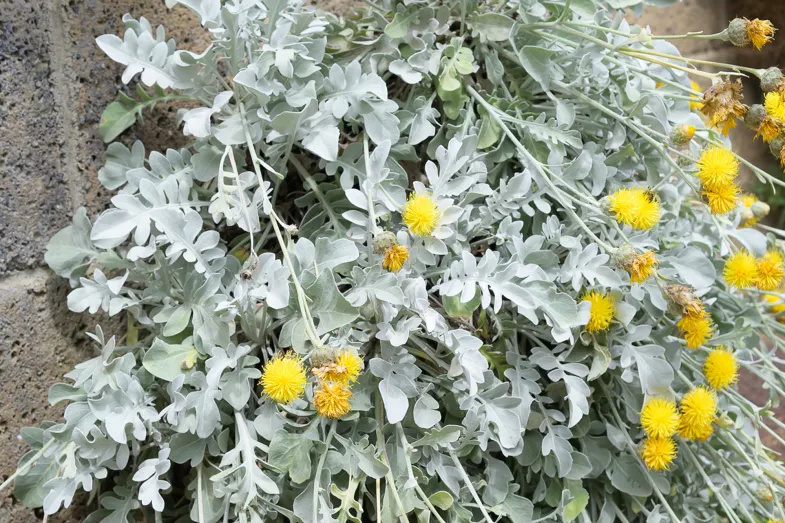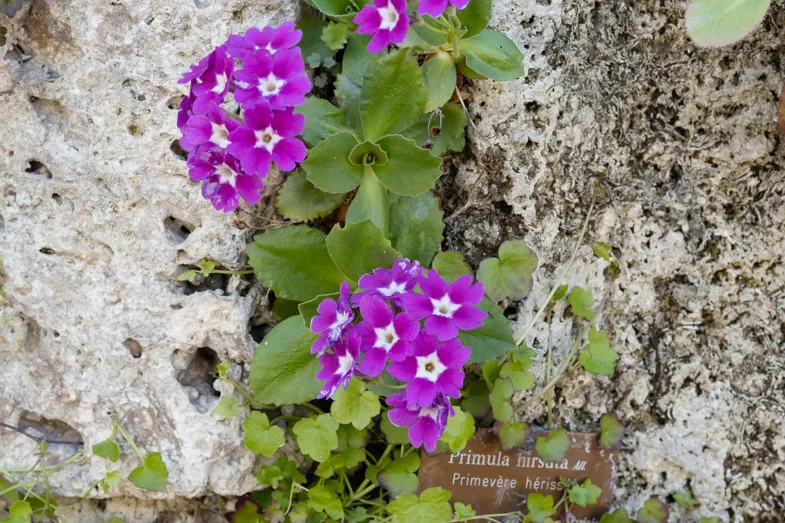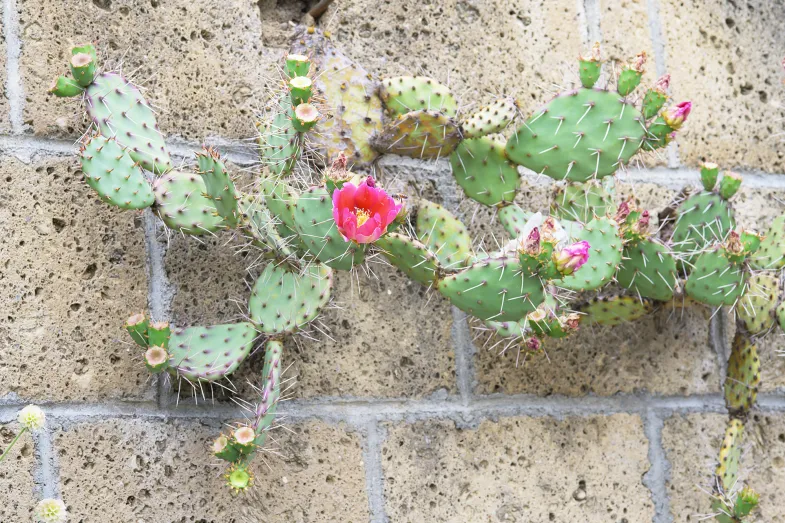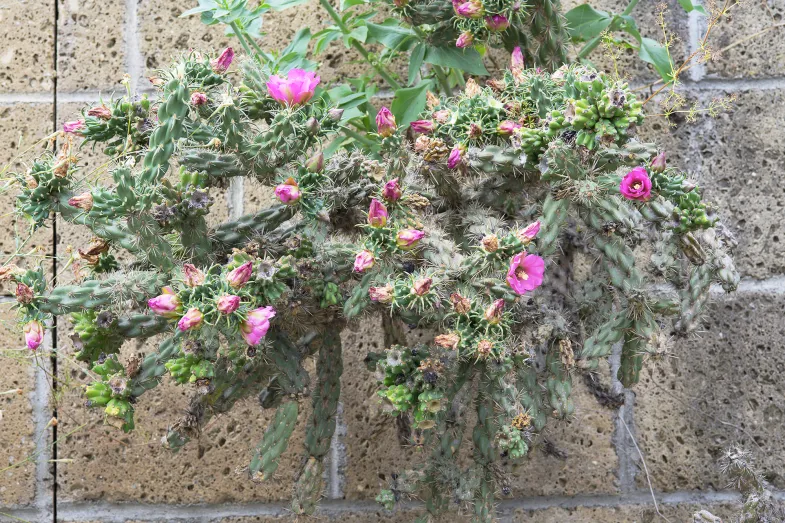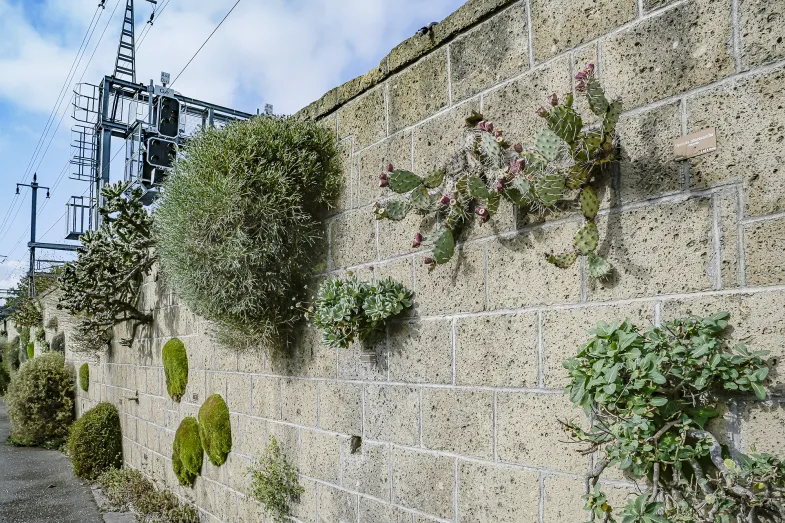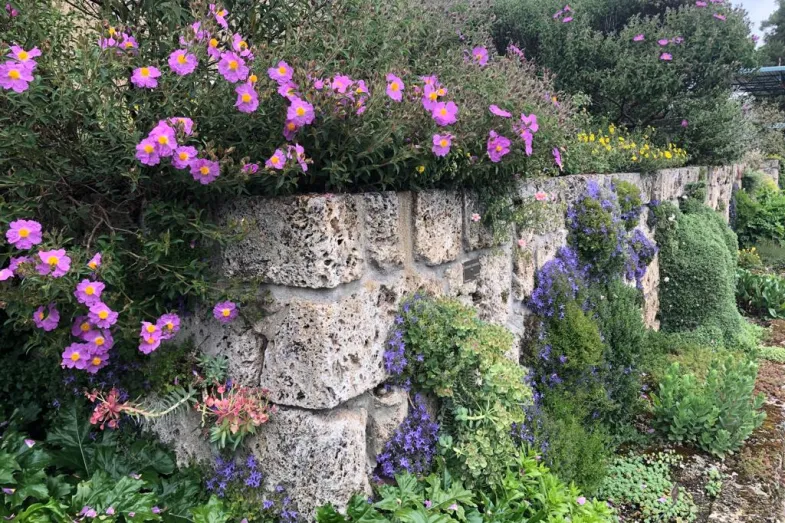Flower wall
The tufa wall along the railway line provides a dry climate protected from the winter frosts. The dry and sunny conditions here are perfect for Mediterranean plants that love the warmth.
A varied collection
This collection was started in 2000 and holds nearly 200 wild taxa showing how plants grow in a vertical wall in a very mineral substrate. The plants come either from seeds exchanged between botanical gardens, or from expeditions in the field. Their origins are highly diverse: the Valais, the Himalayas, the Moroccan Atlas mountains, North Africa and the Mediterranean fringes.
The combined group is extremely decorative in the spring blooming season: the best time of the year is between May and June, when there is an explosion of flowers.
Everyone has its individual characteristics
You will recognise the wide variety of Sedums, undemanding succulents like sempervivum, and the four species of Opuntia, including Opuntia humifusa, the prickly pear tree that comes from North America but has naturalised in the Valais. In other words, the plant was introduced to the Valais and found the conditions agreeable; it reseeds naturally there, to the point where it is becoming invasive. Limonium latifolium, sea lavender, originates in south-eastern Europe and the Mediterranean. It grows naturally in very poor environments like rocky clefts by the sea shore and can survive being attacked by iodine and salt. The plant has extremely long roots able to seek out nutrients far down in the soil. Flowering is very pretty throughout the summer; it can often be found in cut form in florists to decorate bouquets. Some plants, like Haberlea rhodopensis, Rhodope haberlea, a member of the Gesneriaceae, come to use from far away. This plant survived the last ice age, thanks to its extraordinary ability to revive!
Our gardener Amélie’s favourite?
Minuartia stellata! The bog stitchwort has very low flowers and stands very compact, allowing it to resist the elements. It looks like foam, but it isn’t. Amélie would like to appeal to visitors: “Please don’t touch, it’s fragile”.
